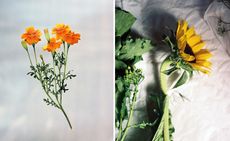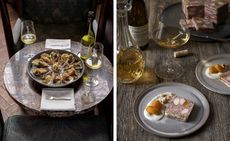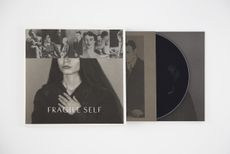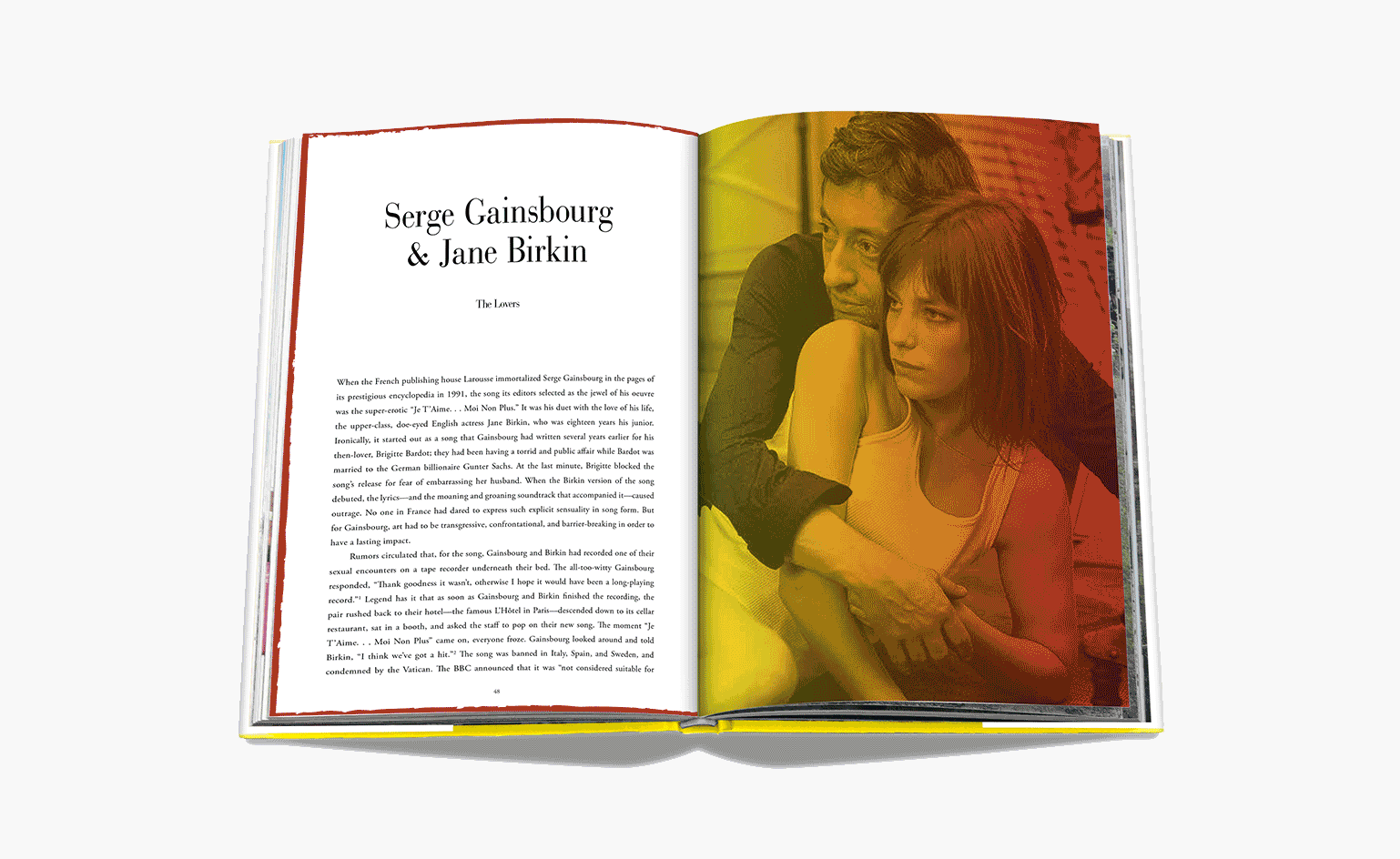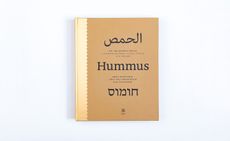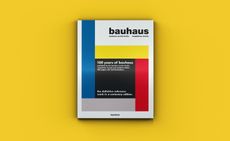René Redzepi, Mette Søberg and Junichi Takahashi on Noma’s new cookbook
Lifting the lid on Noma’s secrets, a new cookbook celebrates the pioneering restaurant’s season menus, and offers a deep dive behind the scenes
- (opens in new tab)
- (opens in new tab)
- (opens in new tab)
- Sign up to our newsletter Newsletter
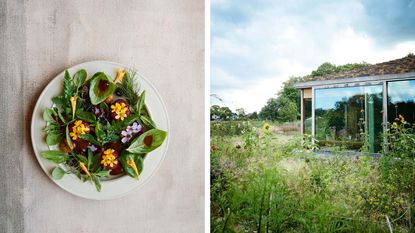
When René Redzepi opened the second iteration of his Noma restaurant in a cluster of farm-like buildings on the outskirts of Copenhagen in 2018 he switched the perception of what was being presented on the plate. The dishes on the three seasonal menus seemed simpler than those of the original Noma, which the Danish chef had opened in 2003, turning fine dining on its head and scaling the heights as the world’s best restaurant. But the simplicity was an illusion. To present a dish such as the clear intensely flavoured sea snail broth, the first course served under the nomenclature of Noma 2.0, required more hours of prep than they had ever done before, in order ‘to come out looking as if very few things have happened,’ as Redzepi said at the time.

Blue mussel and quail egg, from Noma's ocean season 2022
Four years later, Redzepi and two test kitchen colleagues Mette Søberg and Junichi Takahashi have produced a book, Noma 2.0: Vegetable, Forest, Ocean, that is both a visual record of 200 dishes and a forensic documentation of what goes on behind the scenes, shot by longtime Noma collaborator Ditte Isager. In fact, there is so much activity that the 356-page book does not even have the recipes, rather it has narrative descriptions of each dish. For the literal instructions you have to scan a QR code and do a deep dive. For instance, one of Takahashi’s recipes, cod head roast, runs to eight pages (edited down from his original 16). Yet that dish – a few pieces of glazed fish laid out on a linen-lined basket or served on a flatbread – from the first ocean menu seemed like the embodiment of the Noma 2.0.

Noma 2.0: Vegetable, Forest, Ocean ($75, published by Artisan), available from 8 November 2022.
‘It looks so simple, just pieces of meat,’ says Redzepi. ‘From old Noma to new Noma, the dishes are more to the point, yet there is so much more going on.’ That’s one reason why Redzepi would prefer not to call this a cookbook, ‘as if you only buy books with food in them to cook from. It’s a big book, this is our work, who we are, this is what we’ve been doing for the last four years.’ In some respects the book is more akin to a monograph showcasing the work of an architect or artist. The difference, says Redzepi, is that if you venture into the QR codes everything is revealed. ‘People can see how we did it. Believe me, that is something people are looking at in the industry.’

Woodruff and plum, from Noma's summer season 2021.
Outside fellow chefs, he hopes people will simply be inspired by the dishes; the story of Noma’s garden created by the Dutch landscape designer Piet Oudolf; and an account of foraging and discovery by Søberg.
Noma’s only Danish chef, Søberg, who became head of the test kitchen for Noma 2.0, says each season ‘needs one truly iconic dish’. Her first was celeriac shawarma, so meaty and rich with umami, it defied any notion of feeling dissatisfied after a vegetarian meal. ‘It was the first mark on the menu where Mette had a substantial moment that she was spearheading,’ says Redzepi. Søberg relishes the opportunity to design a menu around the plant kingdom, ‘a chance to challenge people’s perception of luxury.’ A more recent dish she’s excited about is a broth of wild fungi incorporating a Danish version of sumac, a spice popular in Middle Eastern cuisine, discovered growing wild around Copenhagen. ‘We didn’t know it was growing here. Now I ride around on my bike and I see it everywhere.’

The main dining room at Noma. The architecture is by Bjarke Ingels Group (BIG), the interiors are by Studio David Thulstrup and feature custom-made furniture by Brdr Krüger and Malte Gormsen.
Takahashi, who hails from Miyagi in Japan, has been at Noma for ten years. He secured a job after eating there, an experience he says is seared into his memory. ‘I was super shocked. I used to work at classic, very French restaurants, so when I came here, I had no clue. The Nordic cuisine is completely different but it tastes much better, pure, with super clear flavours.’
Working in the test kitchen since 2016, Takahashi is the chef Redzepi goes to for problem-solving, from how to turn a cod head into a main course or how to refine a wrapped quail egg for the game and forest season, which starts on 25 October. ‘He is Mr 100 per cent stable, you know when you provide Jun with a job, he is going to solve it.’

From left, Noma sous chef Junichi Takahashi, head of test kitchen Mette Søberg, and founder René Redzepi.
In the foreword to the book, Redzepi reflects on what will be 20 years of Noma in 2023, and his relentless drive for creativity, a cross between intense awareness of feelings and instinct and sheer bloody-minded discipline. ‘Creativity, for some strange reason, it’s having complete order and then at the same time, complete chaos and freedom,’ he says. The balance has shifted over the years. As Noma has grown up as a restaurant, so too has he. Now 44, he still walks into the test kitchen and upends everything but, ‘not in a bad way, I would say it is more collaborative now.’

Apple salad, from Noma’s game and forest season 2019
Redzepi currently walks 20km a day as he trains for the Shikoku pilgrimage, a tour of 88 Japanese temples which he undertakes this month. Next year there will be one more pop-up in Kyoto, and then when the team returns to Copenhagen, ‘one last year of Noma as we know it,’ says Redzepi. Then something new, Noma 3.0, so to speak. Redzepi is yet to reveal exactly what that will be, but has talked about a ‘factory of nature’ where people can taste ingredients produced at various sites worldwide. He flagged the change in June 2022 when under siege for work practices especially in relation to stagiaires (interns), but he says he always intended to morph Noma into something else. It’s why the site was designed around separate adaptable buildings.
‘This is 100 per cent the right time. I was looking to do the transformation maybe when we were 25 years in, but that got pushed forward because of the pandemic. It showed the fragility of Noma and everything around it. The foundation is the team and this name that we built up.’
INFORMATION
Noma 2.0: Vegetable, Forest Ocean, by René Redzepi, Mette Søberg and Junichi Takahashi ($75, published by Artisan) is available from 8 November 2022, noma.dk
-
 Cerith Wyn Evans: ‘I love nothing more than neon in direct sunlight. It’s heartbreakingly beautiful’
Cerith Wyn Evans: ‘I love nothing more than neon in direct sunlight. It’s heartbreakingly beautiful’Cerith Wyn Evans reflects on his largest show in the UK to date, at Mostyn, Wales – a multisensory, neon-charged fantasia of mind, body and language
By Harriet Lloyd-Smith • Published
-
 Nifemi Marcus-Bello is the Nigerian designer shaping Africa’s designscape
Nifemi Marcus-Bello is the Nigerian designer shaping Africa’s designscapeAmong Wallpaper’s ‘Future Icons’, Lagos-based designer Nifemi Marcus-Bello speaks of creating a local manufacturing network and documenting design production in Africa
By Ugonna-Ora Owoh • Published
-
 Luxury loungewear brands to hibernate in this winter
Luxury loungewear brands to hibernate in this winterAs days get shorter and temperatures drop, we present the best loungewear for luxuriating in this autumn and winter, from brands including Loro Piana, Raey, Extreme Cashmere and more
By Tilly Macalister-Smith • Published
-
 60-Second Cocktails: new book shakes up happy hour at home
60-Second Cocktails: new book shakes up happy hour at homeThis new 60-Second Cocktails book brings happy hour into your home with easy but sophisticated cocktail recipes and tips to guide even novice shakers
By Martha Elliott • Last updated
-
 New cookbook transforms horror movies into terrifying food art
New cookbook transforms horror movies into terrifying food artHorror Caviar, the first cookbook from A24, features recipes inspired by horror movies, from creatives including Laila Gohar and Chloe Wise, alongside essays by Carmen Maria Machado, Stephanie LaCava, and more
By Mary Cleary • Last updated
-
 Edible flowers: the how, the what and the why
Edible flowers: the how, the what and the whyA new book from Monacelli, Edible Flowers: How, Why, and When We Eat Flowers, uncovers a fascinating history
By Hannah Silver • Last updated
-
 Match point: learn how to properly pair food and wine
Match point: learn how to properly pair food and wineLearn a thing or two about fine cooking and wine selection with this new book from the London Club
By Melina Keays • Last updated
-
 Fragile Self’s multi-platform debut album is a fervent fusion of sound and vision
Fragile Self’s multi-platform debut album is a fervent fusion of sound and visionThe designer behind David Bowie's album covers has released a multimedia album exploring the history of psychology and the definition of ‘normality'
By Harriet Lloyd-Smith • Last updated
-
 The art of love: creative couples making it work in romance and business
The art of love: creative couples making it work in romance and businessCreative Couples: Collaborations That Changed History explores the unique bond between 15 creative couples
By Katie Meston • Last updated
-
 Chic peas: new art cookbook charts a history of hummus
Chic peas: new art cookbook charts a history of hummusOn the Hummus Route traces a utopian track between cities, people, markets and dinner tables. It documents street food in nine Middle Eastern cities, including Cairo, Jerusalem, Gaza, Tel Aviv, Jaffa, and Damascus, and in doing so, offers a fascinating insight into the area's design, food, and culture
By Elly Parsons • Last updated
-
 Bauhaus bound: coffee table books that celebrate the school’s centenary
Bauhaus bound: coffee table books that celebrate the school’s centenaryPublishers have spread themselves thin over the Bauhaus centenary – concrete-like, covering new ground. Everyone has found an innovative way to approach the subject, all the while republishing editions with updated introductions. It's been a big old year for Bauhaus – here are some of our favourite printed celebrations
By Melina Keays • Last updated





